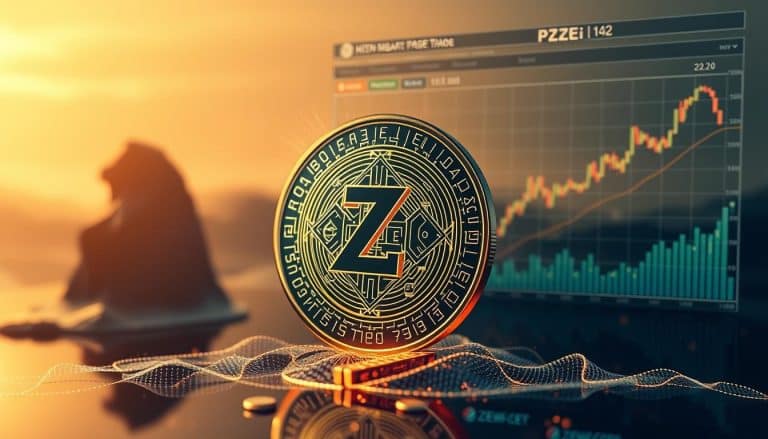Building Xrp Ecosystem
Cryptocurrencies have become an increasingly popular form of digital money, offering a decentralized and distributed ledger system that allows for secure transactions. XRP is one of the most widely used cryptocurrencies, with a network of users across the world. It has the potential to revolutionize global payments by providing faster, more reliable services than traditional payment networks. By building out the XRP ecosystem, users can gain access to greater security and efficiency while leveraging RippleNet’s unified marketplace of liquidity solutions. In this article, we will explore how RippleNet and Xpring are helping build out the XRP ecosystem as well as some potential use cases and benefits.
Overview of XRP
XRP is a digital asset that works as a bridge currency, striving to enable “everybody, everywhere” with the ability to transact frictionlessly, akin to the adage of “the world being one big village.” XRP is a decentralized digital asset released by Ripple Labs Inc. in 2012 and has since had an increasing circulation and market impact. It was developed on its own open source distributed ledger technology, called the XRP Ledger. The native cryptocurrency of the XRP Ledger is referred to as XRP and it acts as a bridge between different fiat currencies and other digital assets. Currently, around 100 billion coins are in circulation while all remaining coins are held by Ripple Labs Inc., which can be used for strategic investments or sales at specific points if necessary. This large amount of circulating supply has given rise to high liquidity for this asset class making it ideal for international payments or remittances at reduced costs relative to traditional banking systems. With these advantages, XRP is becoming increasingly popular within financial institutions and investors alike; thus providing further evidence of its potential impact on global finance going forward. By creating a more efficient payment system through its innovative use of blockchain technology, XRP seeks to revolutionize how people transact with each other worldwide – transitioning us closer towards realizing the vision of “the world being one big village."In order to achieve this mission though, it must first leverage its unique ledger technology – the XRP Ledger – which will be discussed next.
The XRP Ledger
The XRP Ledger is an open-source distributed ledger technology designed to enable fast, low-cost transactions with a secure and reliable platform for digital asset exchange. The platform features an array of benefits such as low transaction fees, faster transaction settlements, and scalability to meet the demands of large networks. Transactions using the XRP Ledger are verified through a consensus protocol where participants on the network agree on one version of the truth before it is added to the ledger. This ensures that all transactions are secure and transparent.
Features and Benefits
Ripple’s distributed ledger system, XRP, offers numerous features and benefits that make it an attractive choice for businesses and individuals seeking to capitalize on the advantages of blockchain technology. It has seen a rapid adoption in recent years due to its interoperability standards that make it easier to access multiple networks without worrying about compatibility issues. Additionally, XRP’s transactions are settled in less than four seconds which makes it one of the fastest ledgers available. Furthermore, its low transaction fees make XRP suitable for smaller payments. All these features have made XRP very popular and have enabled it to build an ecosystem around itself.
The decentralized nature of the XRP Ledger also provides additional security and privacy measures since there is no single point of failure making it more resilient against malicious attacks. The open-source codebase allows anyone to develop applications on top of this platform without any restrictions or censorship from a central authority. This has resulted in various tools being built on top of the ledger such as wallets, exchanges, payment gateways, micropayment solutions etc., thus creating an entire ecosystem around Ripple’s technology. These features make XRP one of the most attractive options for those looking to capitalize on the advantages offered by blockchain technology for their business needs. With its robust infrastructure and reliable performance, Ripple’s distributed ledger system is sure to remain a viable tool for those looking for fast transactions with minimal costs involved.
Transaction Settlements
Leveraging a distributed ledger system, XRP enables transactions to be settled in less than four seconds, making it one of the fastest and most efficient payment networks available. Ripple’s impact on revolutionizing the global financial landscape cannot be overstated; as more businesses and consumers adopt XRP, they benefit from faster settlement times that reduce costs associated with traditional payments. By allowing for near-instant transfers between parties, XRP reduces liquidity strains due to delayed settlements. With its high throughput capabilities, improved security protocols and lower transaction costs, XRP has become an attractive option for many financial institutions:
- It allows for cross-border payments at a fraction of the cost of current methods
- It provides access to new markets with increased efficiency
- It offers greater transparency and auditability that can help strengthen trust in digital payments.
The potential benefits of XRP have been widely recognized by major banks and other entities across the globe, leading to its rapid adoption as a means of improving transaction settlement times. This widespread acceptance serves as an indication that RippleNet is well-poised to further revolutionize how money flows through the world’s economy – creating opportunities for businesses around the world.
RippleNet
RippleNet is a payments network created by Ripple that helps facilitate more efficient and transparent cross-border payments. It is designed for organizations, banks, and financial institutions looking to move money quickly across borders. RippleNet uses the company’s native cryptocurrency XRP as a liquidity solution for its users. This means that when customers of the network send funds, they are able to instantly convert their local currency into XRP, which then allows them to make quick transfers to any country in the world. The use of XRP also helps reduce fees associated with traditional banking transactions as it eliminates the need for multiple currency conversions. Additionally, Ripple markets its own xrp liquidity tools such as xRapid and xVia which allow investors to access liquid capital from around the globe without incurring high costs or experiencing slow transaction times. The combination of these features has enabled RippleNet to become one of the most reliable blockchain payment solutions available today, making it an ideal platform for businesses looking to transact internationally. Transitioning from this subtopic into ‘Xpring’, RippleNet provides developers with access to an open source suite of tools which allow them create innovative applications on top of the existing infrastructure while leveraging XRP’s underlying technology.
Xpring
Xpring is an initiative from Ripple that enables developers to build and grow new businesses in the digital asset space by providing access to financial services and technology. Through Xpring, developers are given access to a range of tools which allow them to develop decentralized finance (DeFi) applications, as well as create interoperability solutions. These tools include XRP Ledger, Interledger Protocol (ILP), Codius smart contracts platform, MoneyTap payments app and XUMM open source wallet. In addition, Xpring provides grants and investments for developers who are building on the XRP Ledger or other related technologies. This helps foster innovation in the space by giving developers access to resources needed for their projects. By giving these resources and incentives to developers, Ripple is helping create an ecosystem around its products that will continue to grow and evolve over time.
XRP’s Growing Ecosystem
Xpring is a platform created by Ripple to invest in, incubate, acquire and provide grants to companies and projects run by proven entrepreneurs. By providing financial support to innovative projects, Xpring aims to build the Internet of Value (IoV). This initiative has already enabled an increasing number of organizations to use XRP as their primary means of payment. As more organizations adopt XRP for payments, the base of users investing and trading in XRP continues to grow steadily.
Ripple’s investments not only help create an ecosystem around XRP but also make it easier for developers and businesses to utilize distributed ledger technology (DLT). Moreover, Ripple’s strategic partnerships with major banks have accelerated the adoption of blockchain-based solutions across industries globally. The ripple effect created by such collaborations has increased the credibility of DLT technology while allowing users access a wide range of services through one unified platform. This growing ecosystem facilitating the adoption and utilization of XRP is likely to open up new potential use cases in the near future.
Potential Use Cases
By leveraging its strategic partnerships and investments, Ripple has enabled the development of a wide range of services through one unified platform, providing potential use cases for distributed ledger technology. The most prominent use case is global payments; RippleNet allows businesses to send money across borders quickly and efficiently with lower fees than traditional methods. Additionally, the platform provides access to decentralized finance (DeFi) applications that are capable of providing more efficient financial solutions. As a result, companies can now access new revenue streams with improved liquidity management capabilities and faster settlement times.
The potential use cases for XRP’s ecosystem extend beyond global payments and DeFi solutions. For instance, Ripple has partnered with several organizations to enable cross-border transactions between banks using their xVia API service. This allows banks to reduce transaction costs while improving security by utilizing the power of blockchain technology. Moreover, interoperability protocols such as Interledger allow users to transfer funds across different networks without having to rely on centralized intermediaries or gateways. These use cases show the immense potential benefits that can be achieved by building out the XRP ecosystem further.
Benefits of Building Out the XRP Ecosystem
Leveraging the strategic partnerships and investments of Ripple, a unified platform has been established with numerous services that provide enhanced capabilities to the distributed ledger technology. The benefits of building out the XRP ecosystem are far-reaching, as it grants access to instantaneous payments across borders, improved data sharing and interoperability solutions for businesses, increased security protocols for transactions on the blockchain network, and lower costs associated with legacy banking systems.
The development of an XRP ecosystem also encourages innovation in various sectors such as finance, healthcare, retailing, and logistics. Instantaneous payments enable businesses to scale quickly without having to worry about transaction processing delays. Interoperability solutions allow companies using different DLT protocols or blockchains to seamlessly communicate with each other. Additionally, stronger security protocols help protect digital assets from cybercriminals and malicious actors while also providing transparency into financial operations for stakeholders. Finally, lower transaction fees help keep overhead costs low so that businesses can remain competitive in their respective marketplaces.
Frequently Asked Questions
What is the total market capitalization of XRP?
The total market capitalization of XRP is currently estimated to be over $10 billion, making it one of the largest digital currencies available. With its scalability solutions and potential to benefit developing nations, XRP has positioned itself as a leading cryptocurrency in the global economy.
What are the advantages of using XRP compared to other cryptocurrencies?
XRP, with its fast transaction speeds, low fees and capability to facilitate cross border payments and merchant services is a viable alternative to other cryptocurrencies. Anecdotally, XRP can settle transactions in 4 seconds compared to Ethereum’s 2 minutes. This makes it a desirable option for traders and merchants who value speed and efficiency.
What is the transaction speed of XRP?
XRP transactions can be completed in a matter of seconds, and the associated fees are typically lower than other cryptocurrencies. Additionally, XRP is known for its scalability, which allows it to process a higher number of transactions per second without any issues.
How secure is XRP?
Amidst privacy concerns and trust issues concerning XRP, the decentralized platform has been designed with a range of features to ensure security. It uses a consensus protocol which allows for transactions to be verified across multiple validators; in addition, it utilizes its own innovative cryptographic algorithm to safeguard data.
What kind of investments can be made with XRP?
XRP mining allows users to generate tokens and build up their liquidity. Liquidity management enables investors to take advantage of profitable opportunities by buying or selling XRP quickly and efficiently.






 Bitcoin
Bitcoin  Ethereum
Ethereum  Tether
Tether  XRP
XRP  USDC
USDC  Wrapped SOL
Wrapped SOL  TRON
TRON  Lido Staked Ether
Lido Staked Ether  Dogecoin
Dogecoin  Figure Heloc
Figure Heloc  Cardano
Cardano  WhiteBIT Coin
WhiteBIT Coin  Bitcoin Cash
Bitcoin Cash  Wrapped stETH
Wrapped stETH  Wrapped Bitcoin
Wrapped Bitcoin  USDS
USDS  Wrapped eETH
Wrapped eETH  Binance Bridged USDT (BNB Smart Chain)
Binance Bridged USDT (BNB Smart Chain)  Chainlink
Chainlink  LEO Token
LEO Token  Zcash
Zcash  Monero
Monero  WETH
WETH  Stellar
Stellar  Coinbase Wrapped BTC
Coinbase Wrapped BTC  Ethena USDe
Ethena USDe  Hyperliquid
Hyperliquid  Litecoin
Litecoin  Canton
Canton  Avalanche
Avalanche  Sui
Sui  Hedera
Hedera  USDT0
USDT0  sUSDS
sUSDS  Dai
Dai  Shiba Inu
Shiba Inu  Toncoin
Toncoin  World Liberty Financial
World Liberty Financial  Uniswap
Uniswap  PayPal USD
PayPal USD  Cronos
Cronos  Ethena Staked USDe
Ethena Staked USDe  USD1
USD1  Mantle
Mantle  Polkadot
Polkadot  Rain
Rain  MemeCore
MemeCore  Bitget Token
Bitget Token